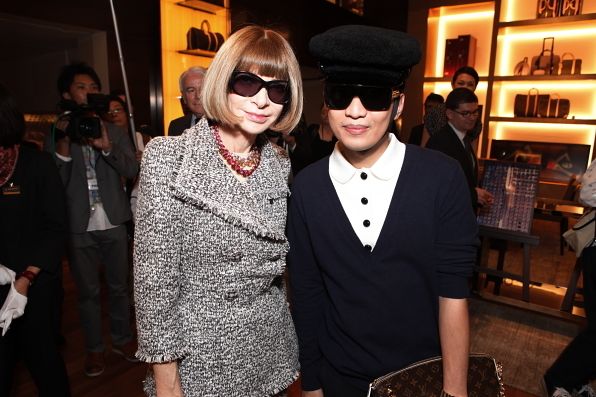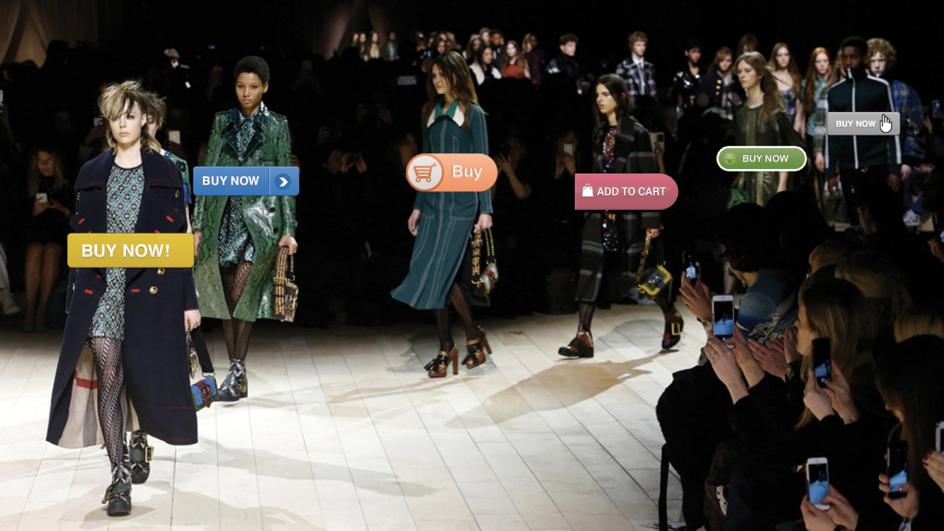
FASHION | By Chloe Carr
Fashion in a digitally diverse age
Does the fashion industry have a stable future in the digital and social-media focused world?
Whether you deem yourself fashionable or not, there is no denying that fashion has a massive impact on society and is in almost every aspect of life. It shows who we are and our self-expression which is documented through our choice of clothing, accessories, hair and make-up and even furniture.
Fashion has always been characterised by change such as the different styles from each decade, the 80’s saw permed hair and bright, vivid accessories as well as biker jackets. Whereas the 90s saw tube tops, sweatpants and windbreakers.
Now thanks to social media putting spotlight onto fashion around the world, there are so many styles from different times and cultures that are popular today. Clothing trends from many years ago have even done a full circle and are part of people's wardrobes today.

Photo by: Sourcing Journal
Photo by: Sourcing Journal
“The purpose of fashion can be as simple as: You need clothing to maneuver in the world. Forget fashion as trend, think fashion and clothing as necessity. You need a pair of pants, a shirt, shoes to go on that interview, to the grocery store, your cousin’s wedding. It’s how we present ourselves to live.”
Fashion items are now also the top selling industry in almost all of the world so it is no doubt that the industry is trying to adapt in so many ways to suit an online and offline audience.
Everything has now changed in terms of the way we see fashion. The fashion industry has said to be "revolutionised". The industry has begun turning away from traditional aspects and taking on a modernised stance, especially this year due to the pandemic.
Instead of looking up and seeing billboards showcasing fashion brands or picking up a magazine to discover the latest trends, we now explore Instagram live streams and stories. We as a society now focus on digital media and social media sites to find inspiration. But what effects does this have on the fashion industry?
Fashion has been so modernised that there is much less demand for printed magazines and we now predominantly as consumers would rather read a magazine digitally than have a physical copy. Perhaps this is because it's easier with our busy everyday lives or because we can like and share our thoughts on social media in comment sections?
The less demand for print has meant that a lot of publication's have decided that going completely digital or having a large digital presence is the best way forward to reach their audiences and to stay relevant. However, this also comes with its consequences as most of the time people want to consume fashion content for free online. This means publications are posting features for free and have to gain profit from elsewhere such as through advertising.
V Magazine is an American fashion magazine who have a mostly digital presence. The publication posts its magazines issues online which are available for the audience to read and swipe through page by page:
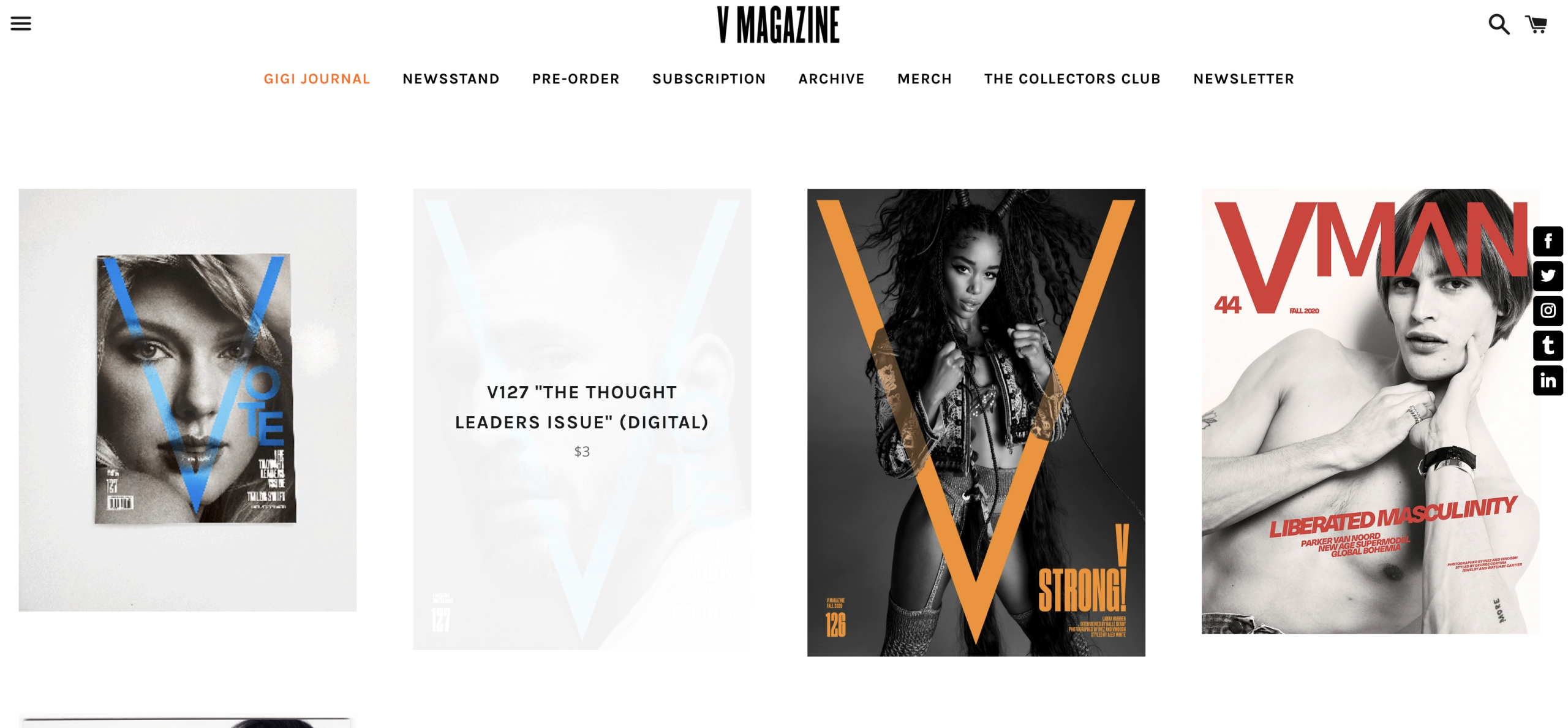
Many publications in the last few years have decided to close their print editions. In 2017, UK Glamour magazine announced it was going "digital first" and stopping their monthly editions, instead producing an issue twice a year. Following in their footsteps, in 2019 fashion and beauty magazine Marie Claire also announced the closure of its UK print edition.
Statistics published by the Statista Research Department show that the UK print sales generated by women's lifestyle and fashion magazines have dropped significantly from 2011 to 2019. With figures dropping from 103.8 million pounds in 2011 to 21.2 million pounds in 2019:

Photo by: Statista
Photo by: Statista
Using digital mediums also comes with its challenges and changes for publications and brands. Such as the differing in tone of voice for each format. When brands are posting to social media sites the tone of voice that is used is a lot more casual compared to if you were writing for a print format.
Leading British fashion retailer: Motel Rocks, uses a very friendly and relatable tone in their Instagram posts when advertising products to consumers.
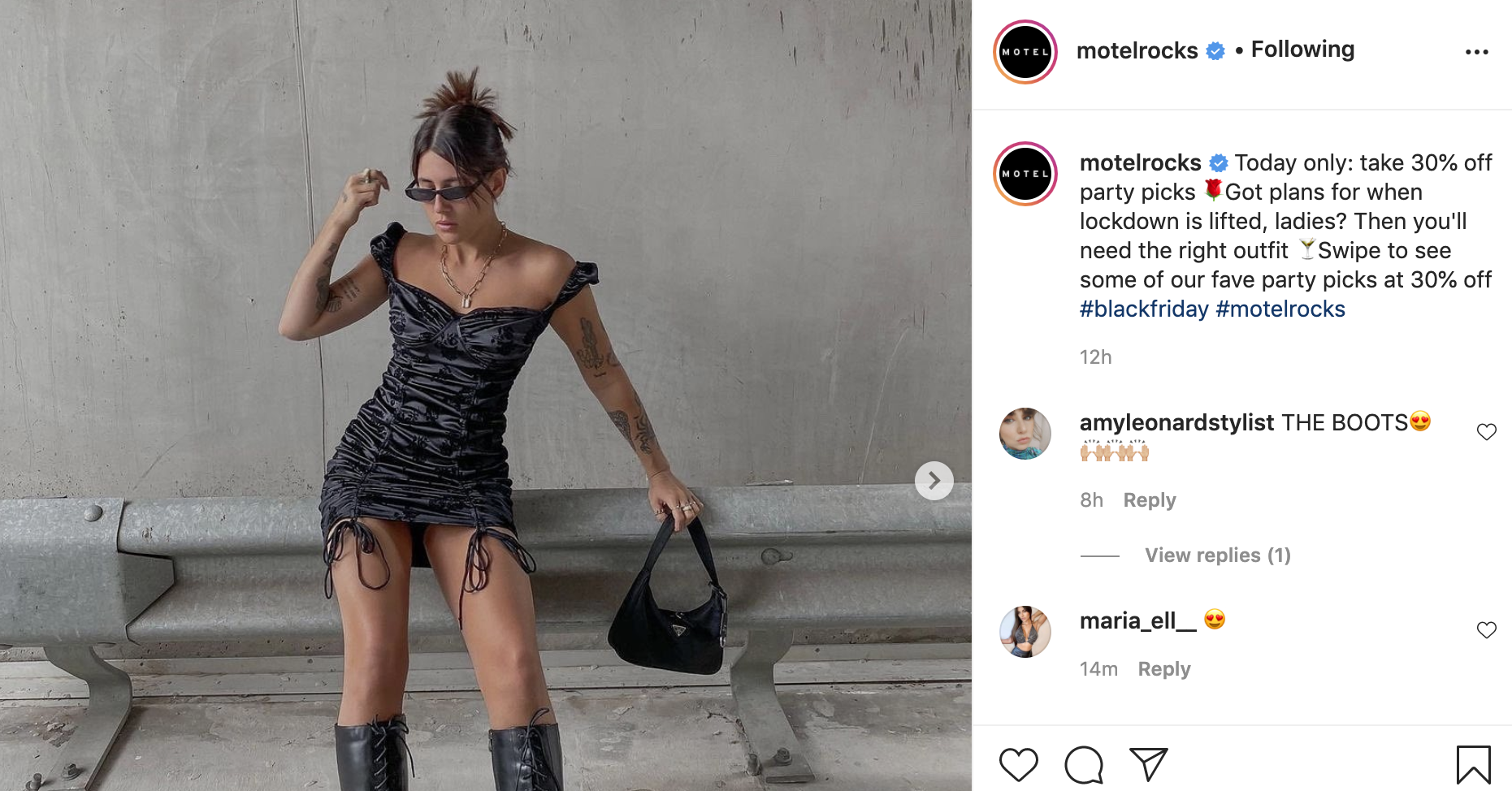
Addressing a target audience with statements such as "Got plans for when lockdown is lifted, ladies? Then you'll need the right outfit". The result creates a sense of casual friendship or connection between the brand and the consumer and makes the brand seem relatable.
Within the fashion industry there has been a development of using Instagram as a marketing tool most notably through “influencers”. Influencers are people with a significant social media following who use their profiles to showcase their lifestyle, advertise and inspire others.
Influencers use a variety of platforms to share posts and stories and often have partnerships with big brands. Brands often pay influencers or give them free items for in return, them tagging the brand in their posts. Most notably influencers tend to use Instagram as their platform. If you regularly use Instagram, you’re probably not a stranger to seeing influencers posts promoting brands and products, as they've pretty much taken over the popular social media site.
When an influencer puts up a post on Instagram advertising an item with a caption telling you how much they liked the item and that they think you’ll love it too, you’re more inclined to purchase it because you’ve built that relatable connection to them and trust what they're saying. Especially if it's someone you idolise such as a celebrity, who are very well-versed on how to inspire their followers.
Former Love island star and social media influencer, Molly-Mae Hague, often posts paid partnerships on Instagram with clothing-brand Pretty Little Thing and has her own collection with the brand which she shares to her 4.9 million followers. Her followers admire her and have built a connection with her that feels like she's a friend, so they will tend to purchase what she advertises.
Instagram is definitely not the only social-media site that uses influencer marketing. TikTok a video-sharing platform is becoming almost as powerful as Instagram in the fashion world with the platform having its own set of influencers such as Addison Rae and Dixie D'Amelio.
Influencer marketing definitely has a lot of positives for both brands trying to market their businesses and for consumers. Influencer marketing is effective due to the fact that the account holders' followers have chosen to see the content they post, and if they no longer want to see their content, they can simply unfollow them.
In terms of target audience, brands tend to aim their products at an audience who are interested in similar things to what the influencers they follow are. Because the influencer has already established their target audience it makes things a lot easier for brands. This means that brands who use influencers as a tool to market themselves, will get more exposure mainly to their required audience due to reaching a large amount of people in one post.
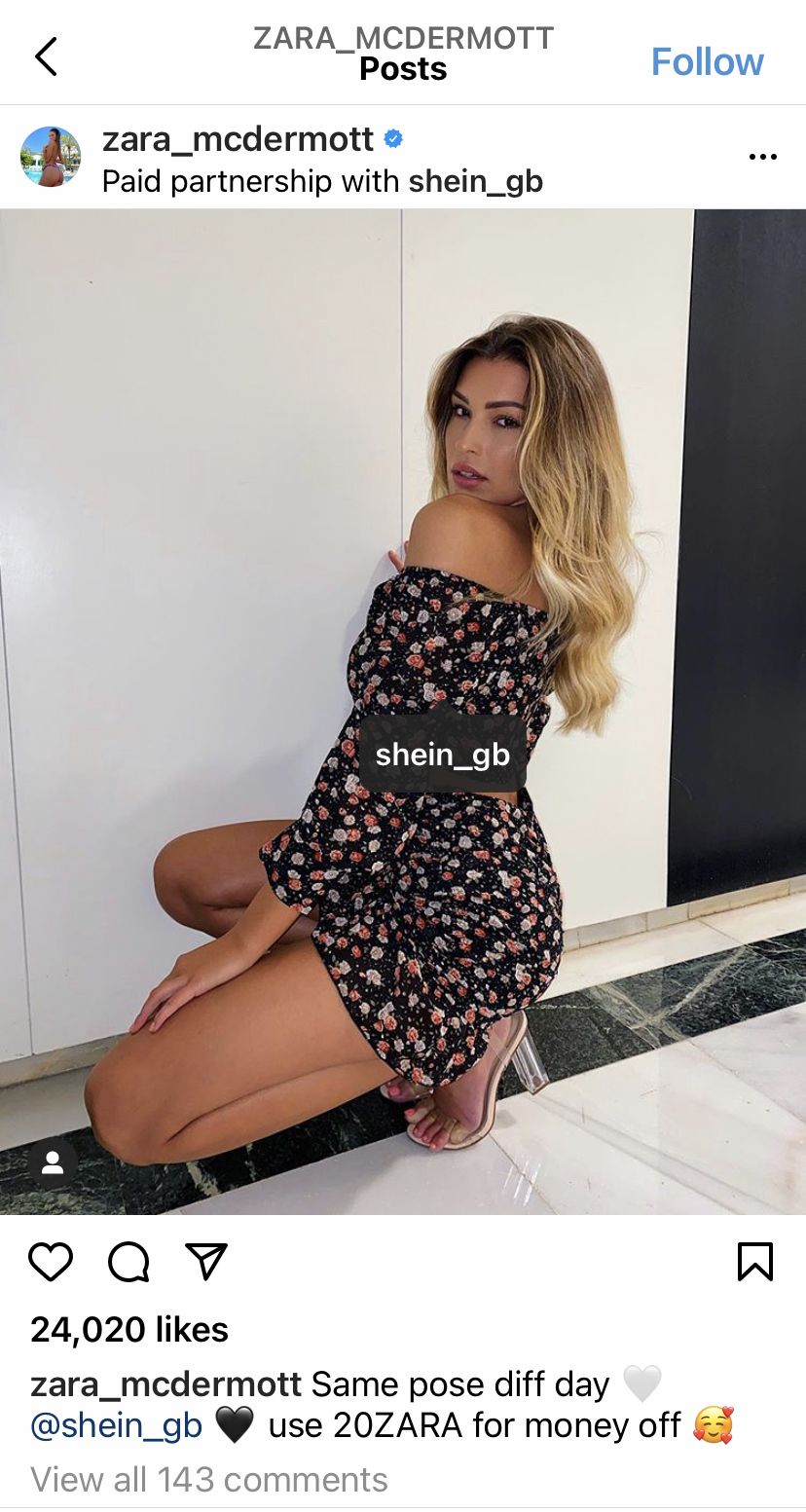
Photo by: Chloe Carr
Photo by: Chloe Carr
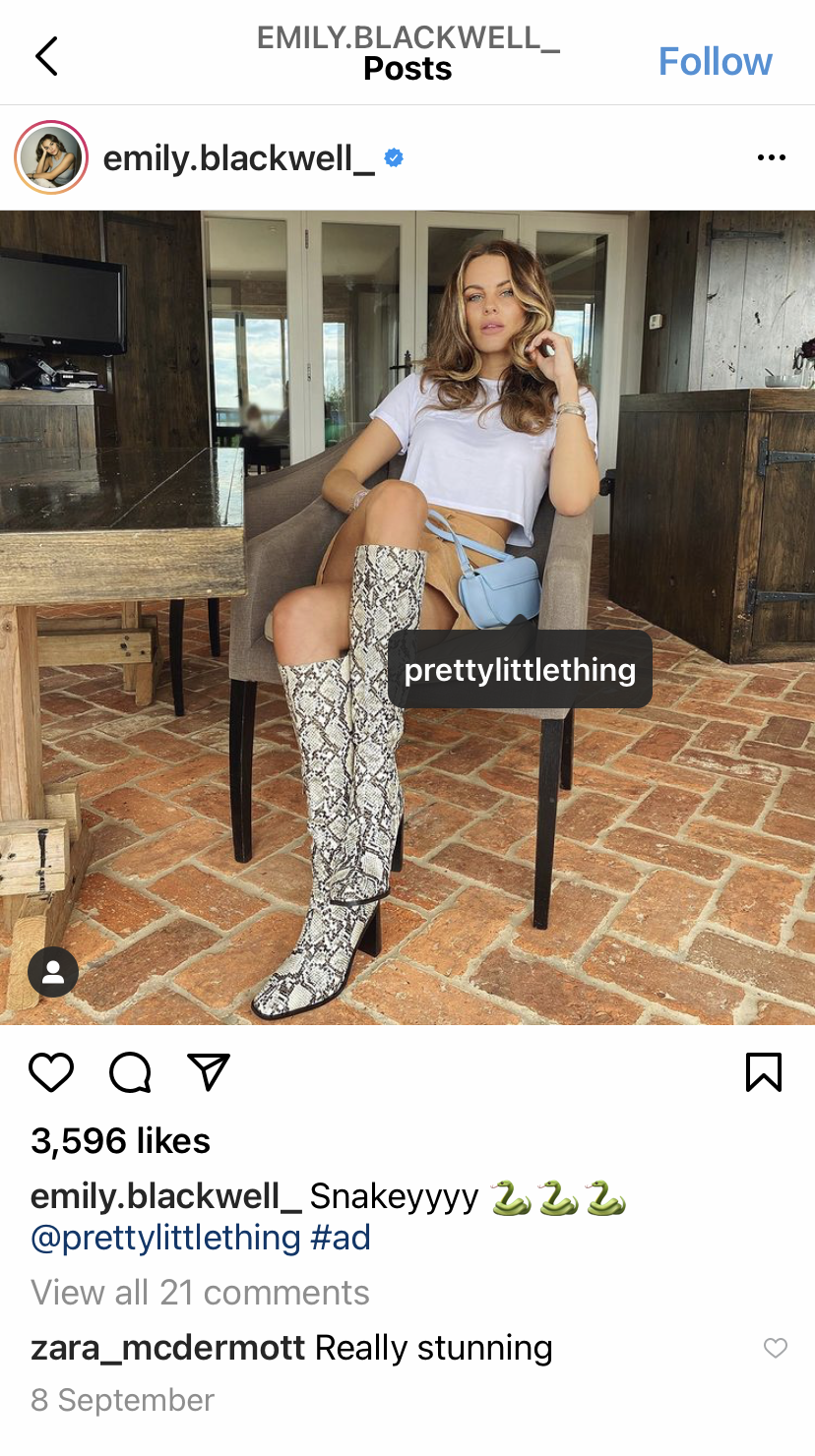
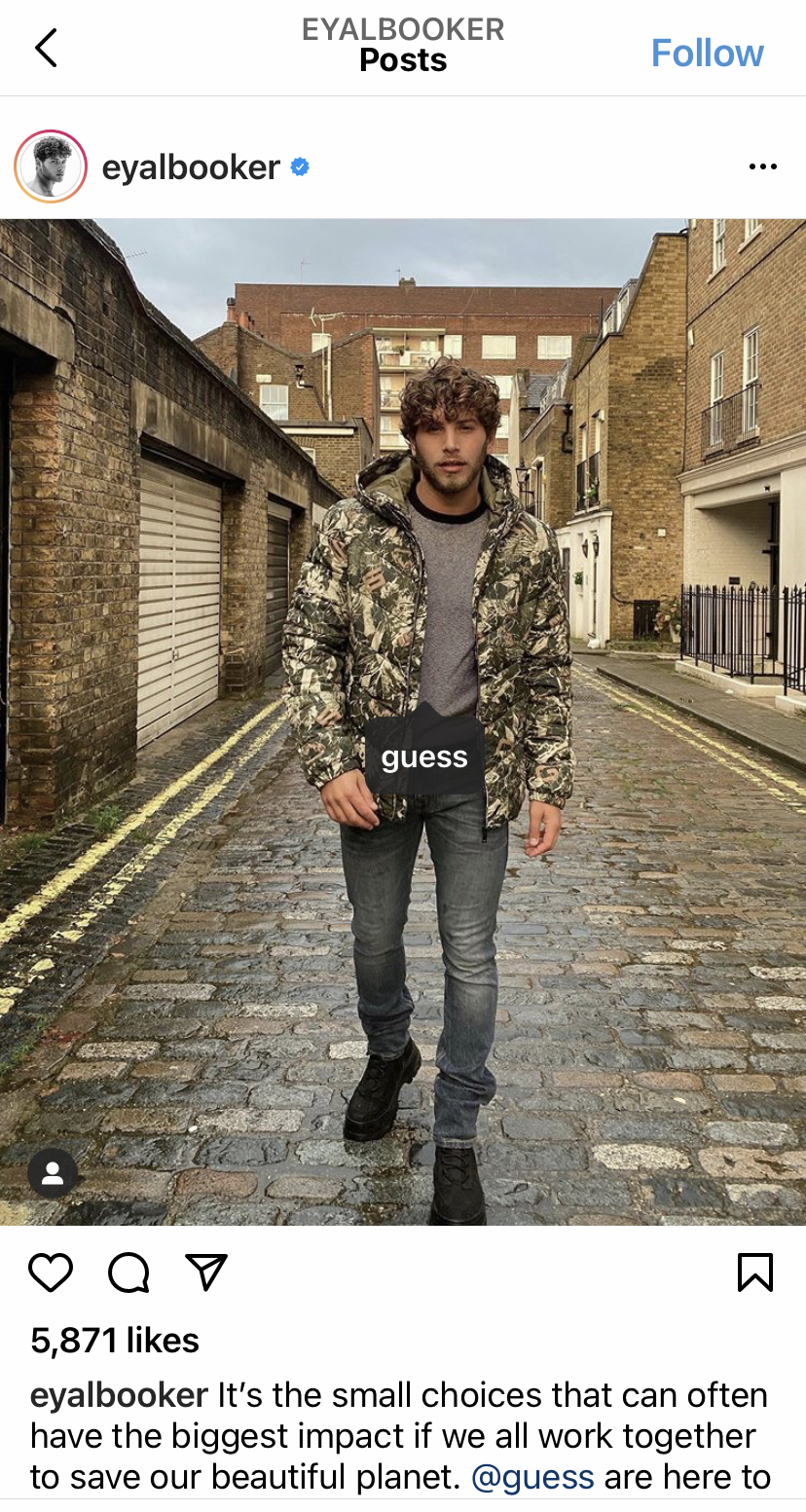
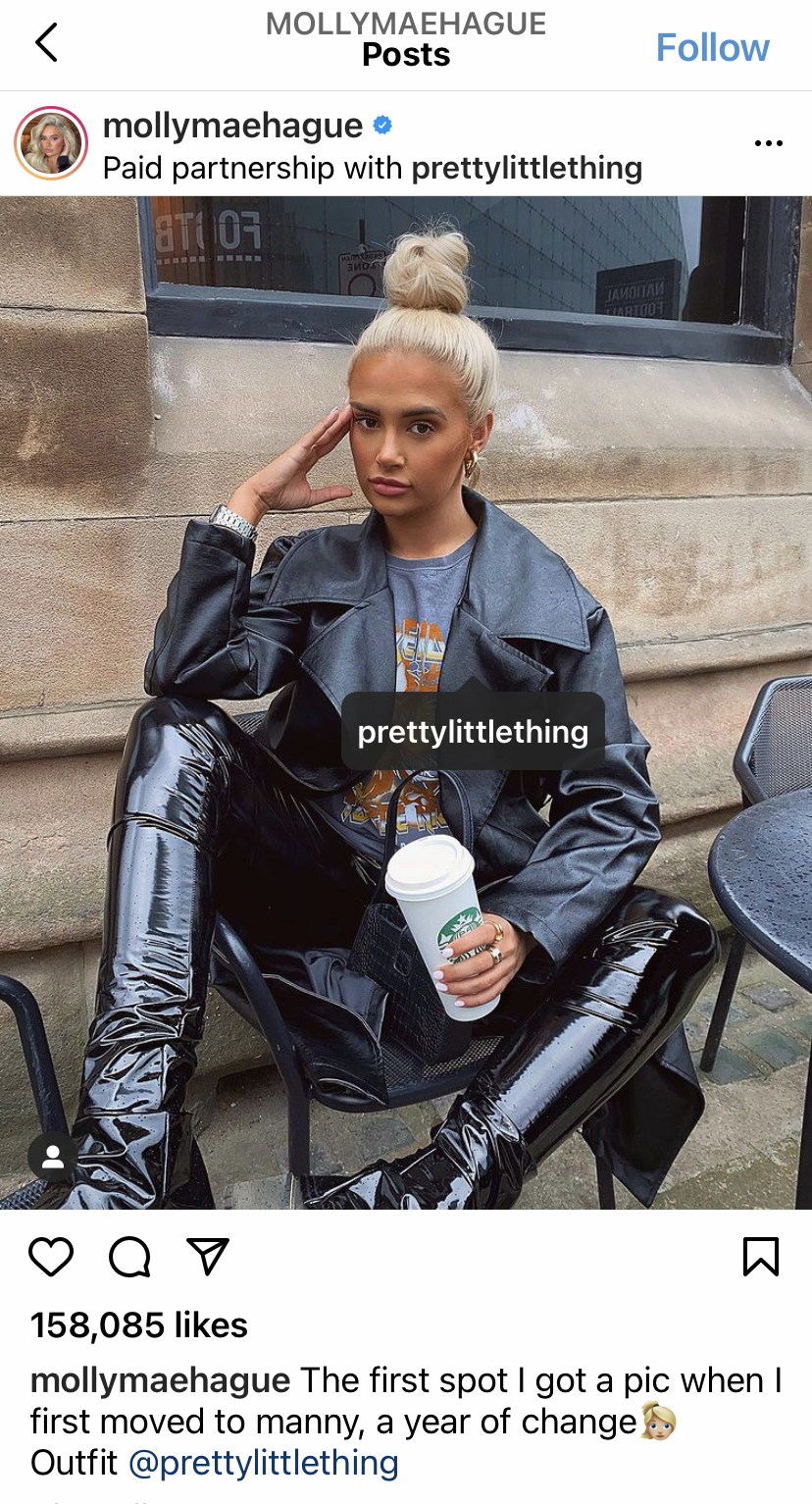
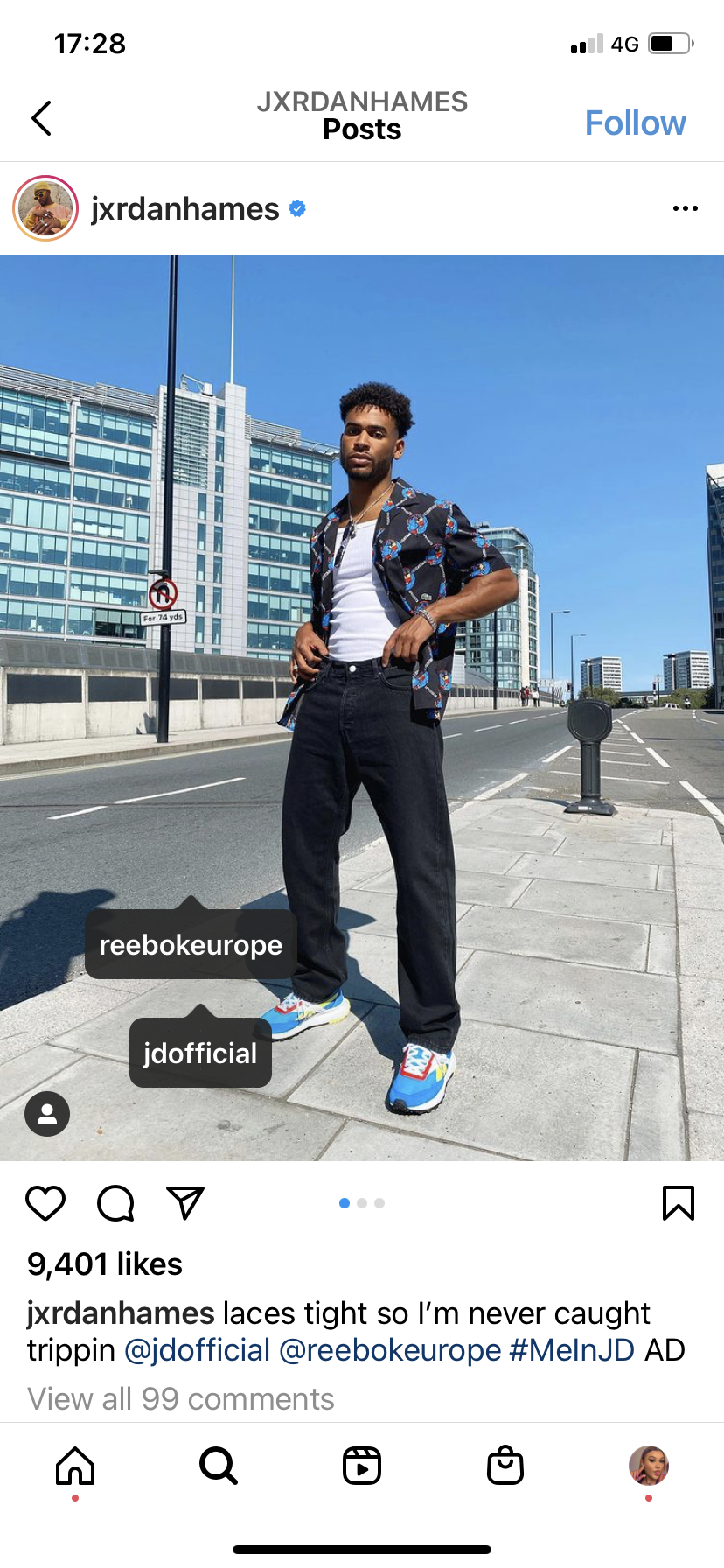
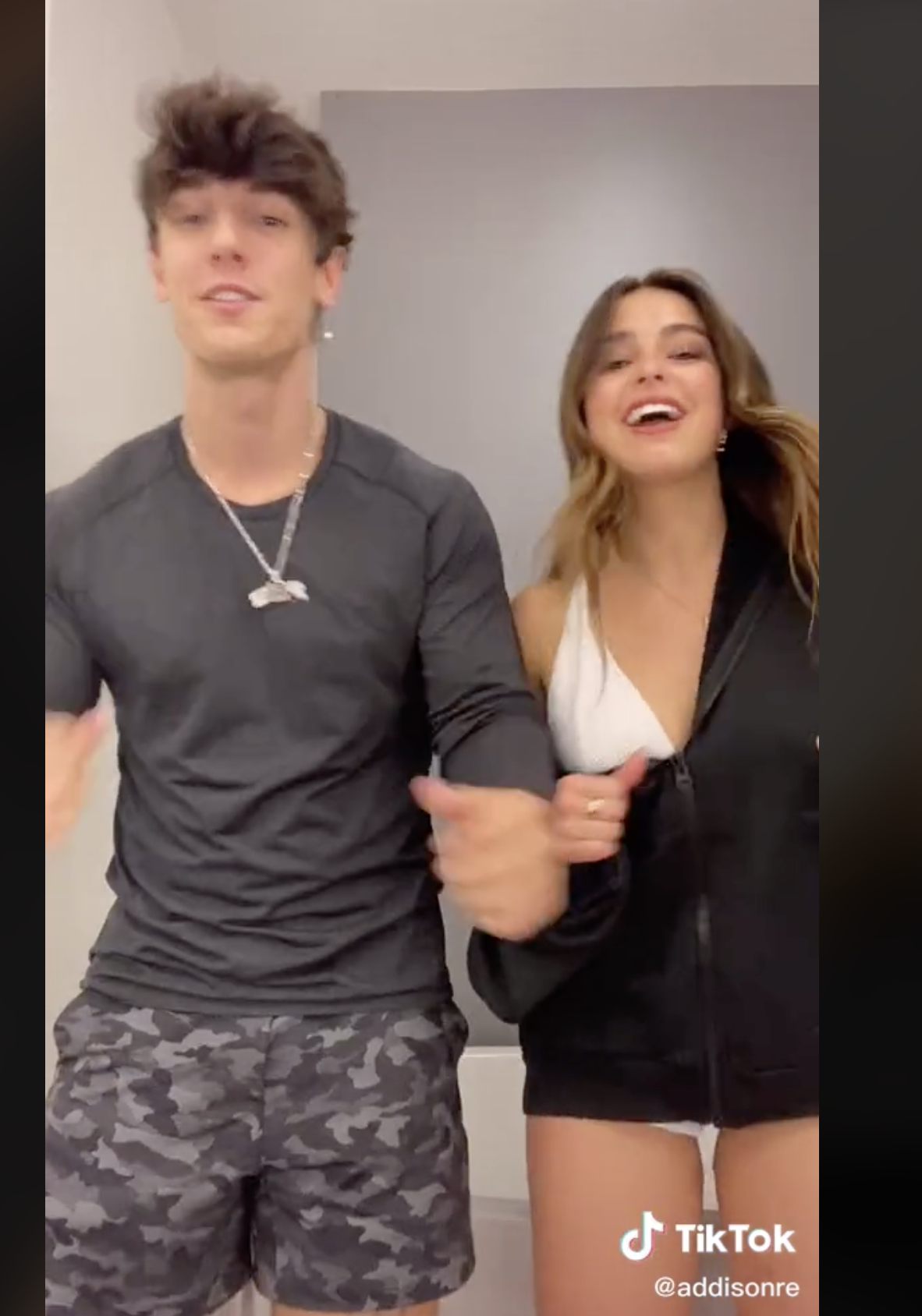
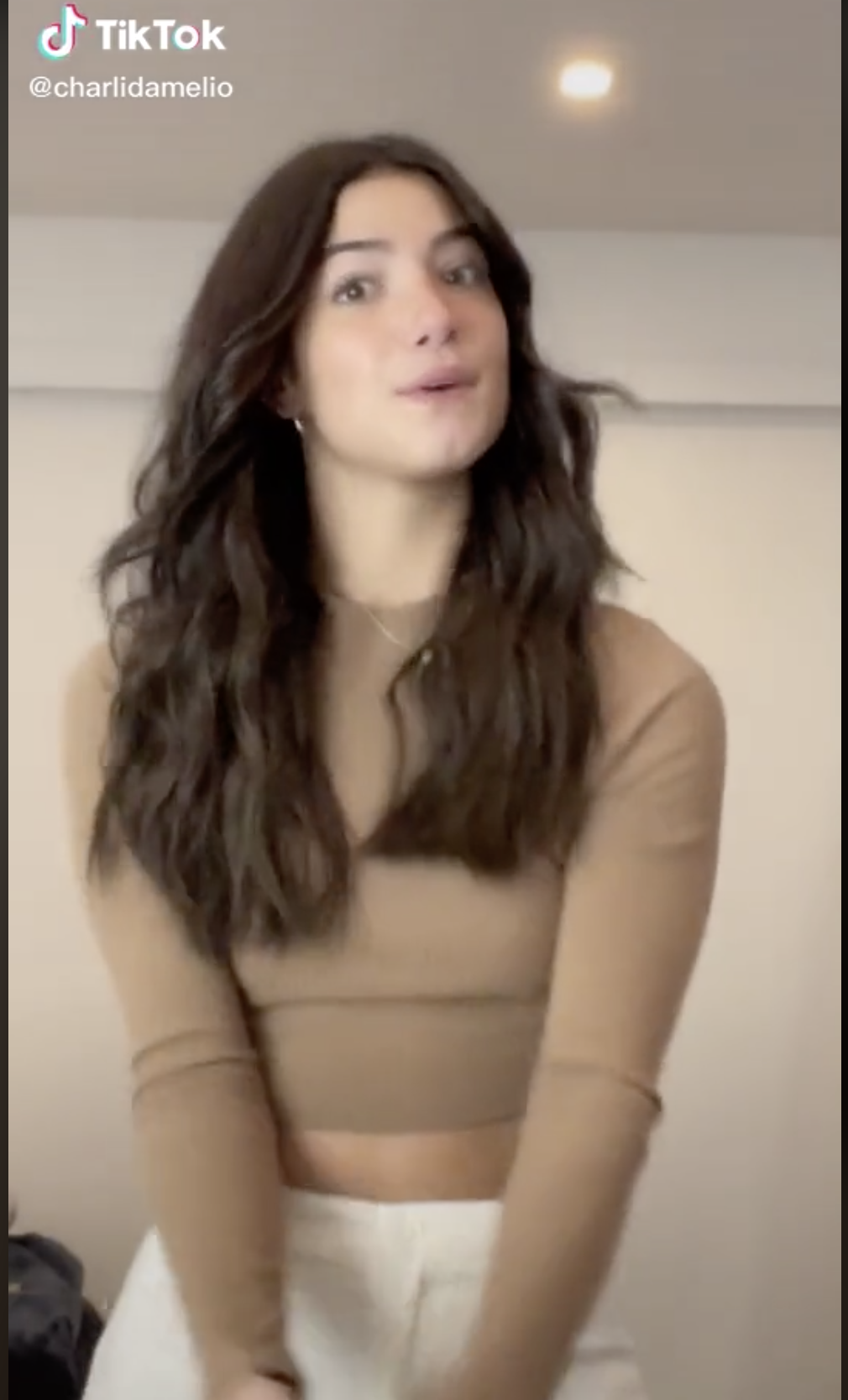
Bryan Grey Yambao, mostly known as Bryanboy is a celebrity fashion and style blogger who has been deemed one of the “OG” influencers and has helped shape the fashion industry into what it is today. Yambao started out a simple fashion blog in 2004 which was one of the first fashion blogs of its time and he then built up a large following.
A few years later he went from an online influencer to a well-known name, sitting in the front rows of fashion shows with Anna Wintour and even having a Louis Vuitton bag named after him called the “BB Ostrich bag”. This helped him to gain notability within the fashion establishment.
Yambao is now a very respected person within the world of fashion and people rely on him not just for marketing but for his honest and comedic takes on the industry which are showcased to his almost 600,000 Instagram followers.
Yambao's rise from blogging as a hobby to having luxury designer bags name after him and thousands of followers world-wide, is a clear example of how important influencers are within the fashion industry and how powerful social media can be.
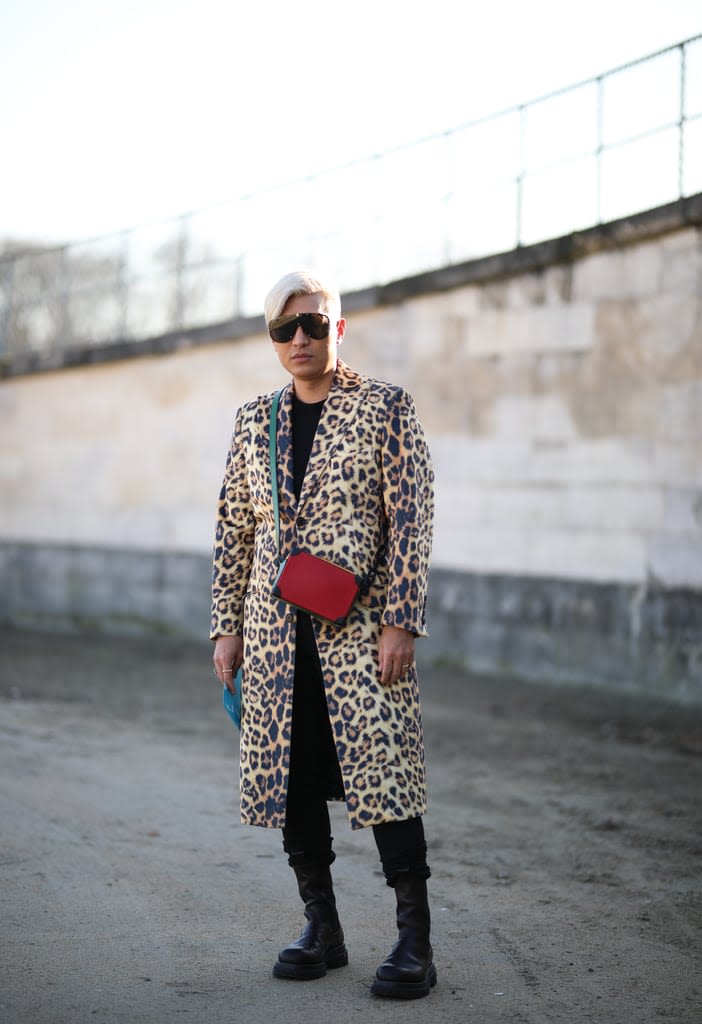
Photo by: Getty / Claudio Lavenia
Photo by: Getty / Claudio Lavenia
Kylie Jenner is one of the world’s most popular and powerful influencers and has over 200 million followers across her social media platforms. The Keeping Up with the Kardashian's star is said to be paid around $1.2 million for one post on Instagram.
Although, influencing like other marketing strategies definitely has its negative effects. In Jenner's case, there has been much speculation on whether there is truth behind what the star advertises on social-media or whether it has only been advertised as “amazing” for the sole purpose of a pay-check.
Such as in July of this year Jenner advertised the sale of knock-off Apple AirPods, which clearly have much poorer user experience to the genuine product. Jenner posted to her Instagram story stating to use the code "KYLIE" when purchasing the product. She received hundreds of comments on social media questioning why a billionaire would be endorsing the purchasing of fake Airpods to her followers.
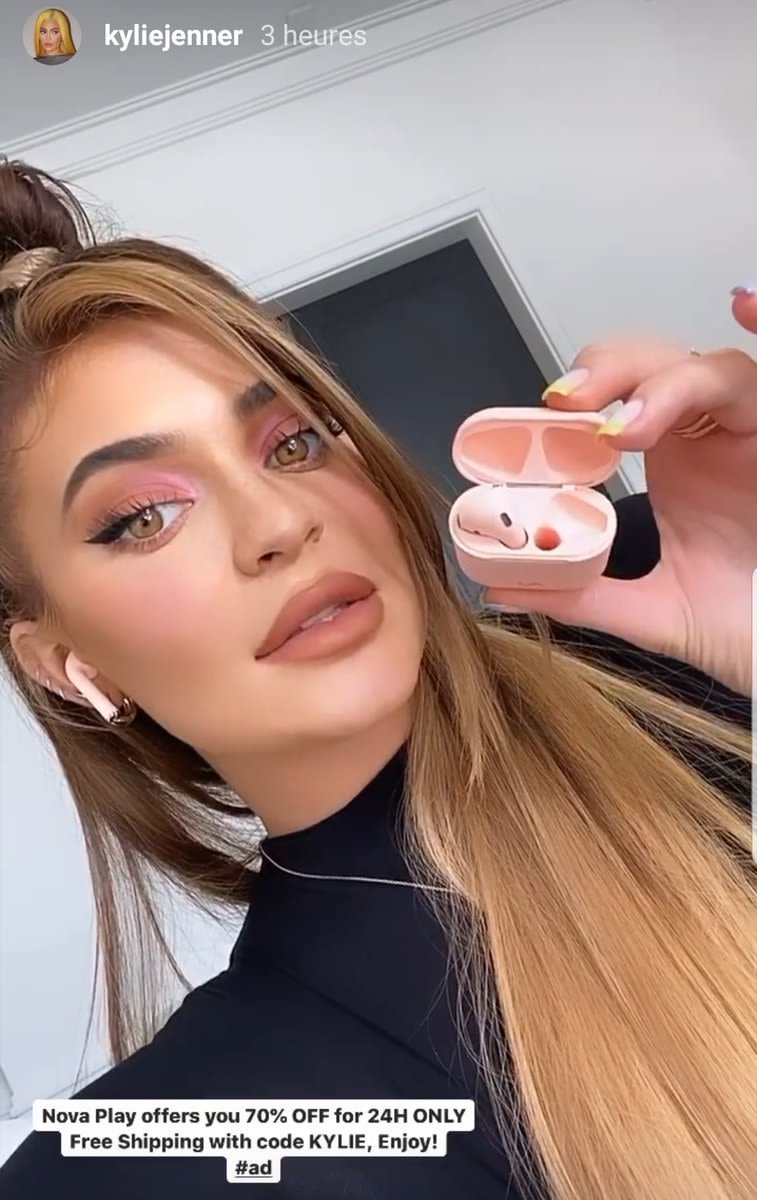
Photo by: BBC
Photo by: BBC
you’d think Kylie Jenner, a billionaire, would be above advertising fake AirPods to her 152 million followers, but apparently not 🥴 pic.twitter.com/r4yp28Lqi4
— Tom Warren (@tomwarren) November 30, 2019
Jenner along with other influencers, have also been criticised for giving young people unrealistic career aspirations due to seeing how much money can be made from online posting. However, there is no denying that influencers such as Jenner are popular marketing tools as they have the ability to affect their follower's purchases.
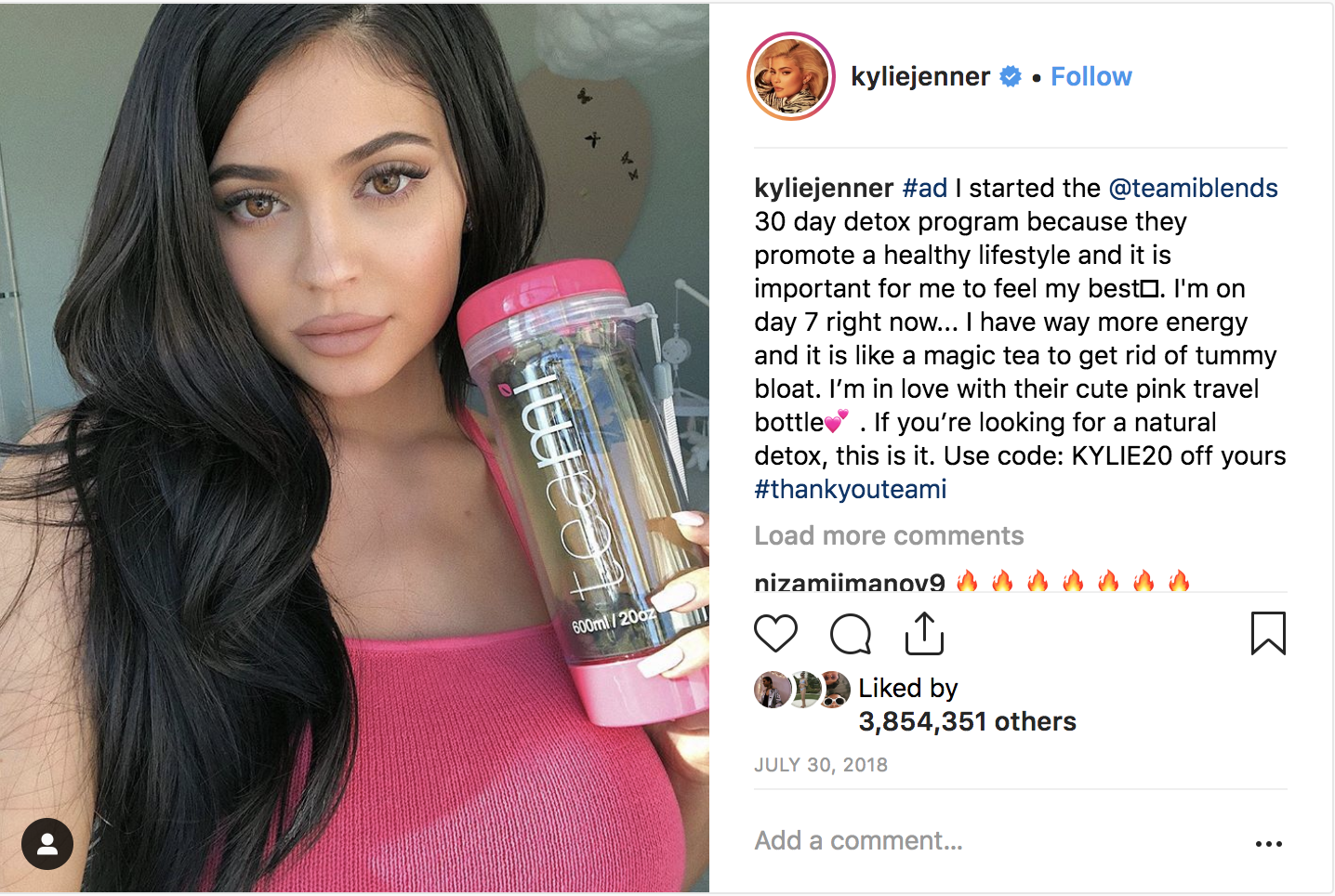
Photo by: Truth In Advertising
Photo by: Truth In Advertising
However, regulations are now changing for influencer marketing. The Advertising Standards Authority (ASA) has stated that influencers have to be clear with their followers about when their content has been sponsored or paid for by a brand.
UK YouTuber and influencer, Zoe Sugg, also known as Zoella, was discovered to be in breach of the advertising standards guidelines. The star posted a video to her Instagram story showing off a floral dress by ASOS to her almost ten million followers. But having done this, she failed to disclose that it was an advert or that she had been sponsored to promote the product.
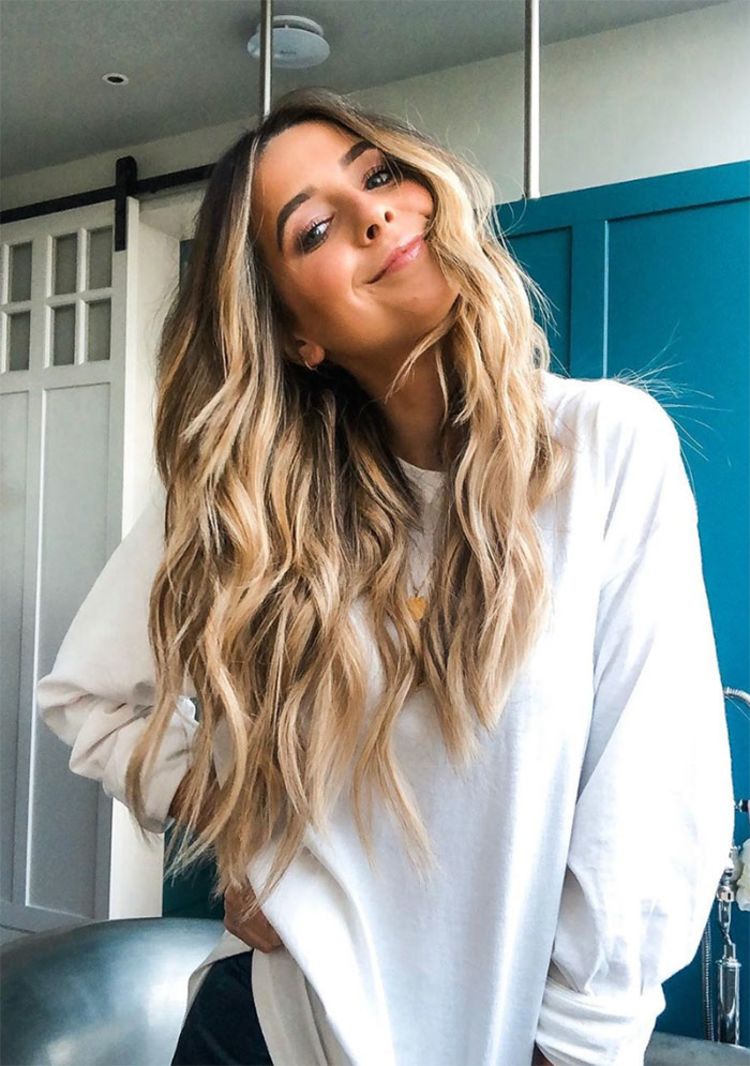
Photo by: Hairdressers Journal Magazine
Photo by: Hairdressers Journal Magazine
A way in which influencers have been disclosing their content is sponsored is by including the hashtag ad in their posts or using the Instagram feature “Paid partnership with” which means that the user has a business relationship with the brand.
Reality television personality and model, Olivia Bowen, frequently includes the #ad or paid partnership feature on her instagram posts:

Influencers are not just celebrities and can also be organisations or everyday people who are often labelled as “micro-influencers”. They are now as important as fashion critics and models within the industry.
Ellie Roden, a make-up artist and content creator from Merseyside, has documented her experience with using Instagram to reach an audience and how brands work with her to share their products:
The use of Roden's posts by cosmetic brands such as Anastasia Beverly Hills highlight's yet another innovation within the fashion industry. Brands now using user-generated (any any form of content, such as images that are created by the user) to share and advertise their products to beat out any competition, and to build a reliable connection with their audiences.
This further builds recognition for brands because artists such as Roden, want to use brands products and share their images and videos online, to be featured on their website or newsletter to get themselves recognised as content creators. Zoomph even labelled ABH as: "the people’s makeup brand, with its loyalty to user-generated content". Zara is another brand that uses user-generated content to their advantage by partnering with influencers and using branded hashtags to advertise their products.
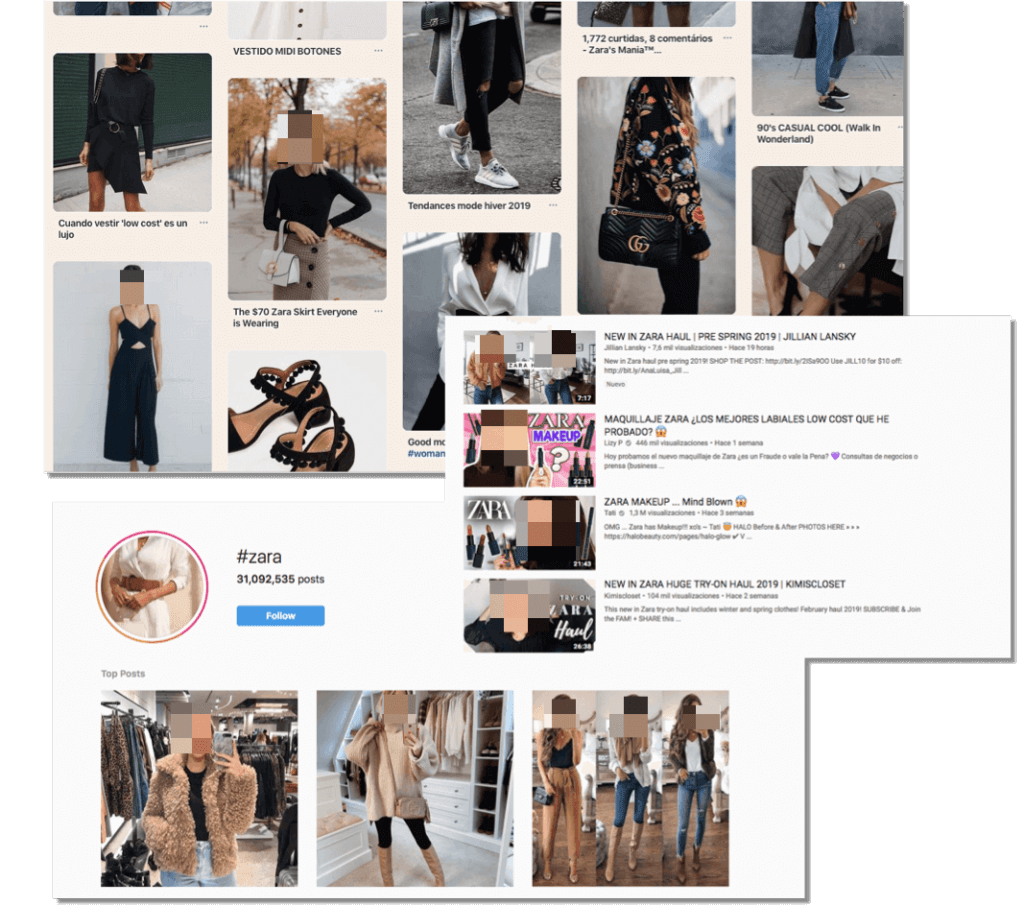
Photo by: Easypromos
Photo by: Easypromos
User-generated content is a very clever and powerful method of boosting a brand's exposure and credibility and is used throughout the fashion industry. By using real-life photos from consumers, a brand becomes more reliable and trustworthy.
Exploring the life of an influencer, Ellen Eastwood, a fashion blogger, model and brand owner from Leeds gives us an insight about her experience within the online fashion industry:
"I’ve been a fashion blogger consistently for about a year and a half now, before then I did get gifted the occasional product, but it was on a lot lower level than now due to my following growing over the years. I originally started on YouTube two years ago, making videos about different products I already had and reviewing them. I never had the intention of my Instagram growing initially, I just did it all for fun. I was never gifted anything or even knew what a collaboration was at that point."
"There are so many positives of using Instagram and having a platform, it’s especially amazing for a business and great to be able to share important matters or my opinions to others. I also love promoting other brands too. I’ve been gifted some amazing opportunities and I’ve been starting to make an income from it this year too, to then turning my own Instagram into a business."
"However there definitely are some negatives which you can’t ignore, luckily, I rarely get any hate comments, but when I was starting out, I used to get quite a lot. It’s also hard not to get into comparing yourself to others, in content AND looks. You can easily scroll through Instagram and wish your pictures looked as good as hers, or why you don’t look like her?"
"As well, it is hard to switch off as being online is now basically my job, I do find it hard to take time away from my phone sometimes - but you can’t get too wrapped up in it."
"Is the fashion industry better off with social media? My initial answer was yes, it’s improved as basically every brand has an online presence, with Instagram and ads, influencers promoting their clothes for bigger sales. But what about the small independent businesses? Social media and online shopping has killed our high street, people would rather wait in for their parcels then go out and shop for new clothes, and I probably would too."
The way we receive fashion content is being further adapted through features such as live-streaming. In 2017 Instagram announced its live video-sharing feature which has enabled brands to capture their fashion shows and share it in real-time across the world.
Brand's also share behind-the-scenes footage before the shows take place which builds excitement and creates a unique experience for viewers. The fashion industry is now so accessible – people feel like they are a part of shows and can experience it whilst sat at home or from the office or literally anywhere.
Although Burberry was the first brand to live stream a fashion show back in 2010, a lot has changed in the space of ten years with live streaming of fashion shows. Now people can comment and like on live-streams and document their experience on the video itself. It’s also the new normal to see crowds of people, even in the front row capturing content on their smartphones at fashion shows to share straight to Instagram or Facebook.
This year for the first time to due to the coronavirus pandemic, the industry switched to Digital Fashion Week shows. The British Fashion Council with London Fashion Week, was the first to announce its men's fashion week was going digital back in June as well as symposiums shared on video communication software, Zoom. Other world-wide fashion shows followed the same route such as Paris Fashion Week and Milan Fashion Week.
Social media platform TikTok has also began sharing fashion content online amongst the pandemic to their gen-z audience. The site announced its own fashion month which ran from September-October during the busiest time of year for fashion. It featured a variety of fashion events during New York Fashion Week with labels such as Louis Vuitton and Saint Laurent being showcased under the hashtag #TikTokFashionMonth.
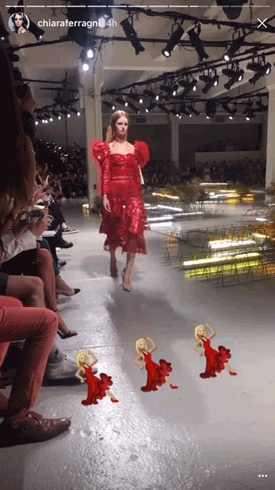
Photo by: Chiara Ferragni
Photo by: Chiara Ferragni
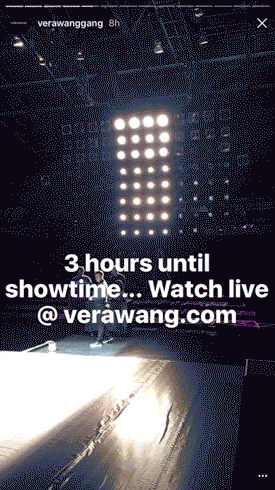
Photo by: Vera Wang
Photo by: Vera Wang
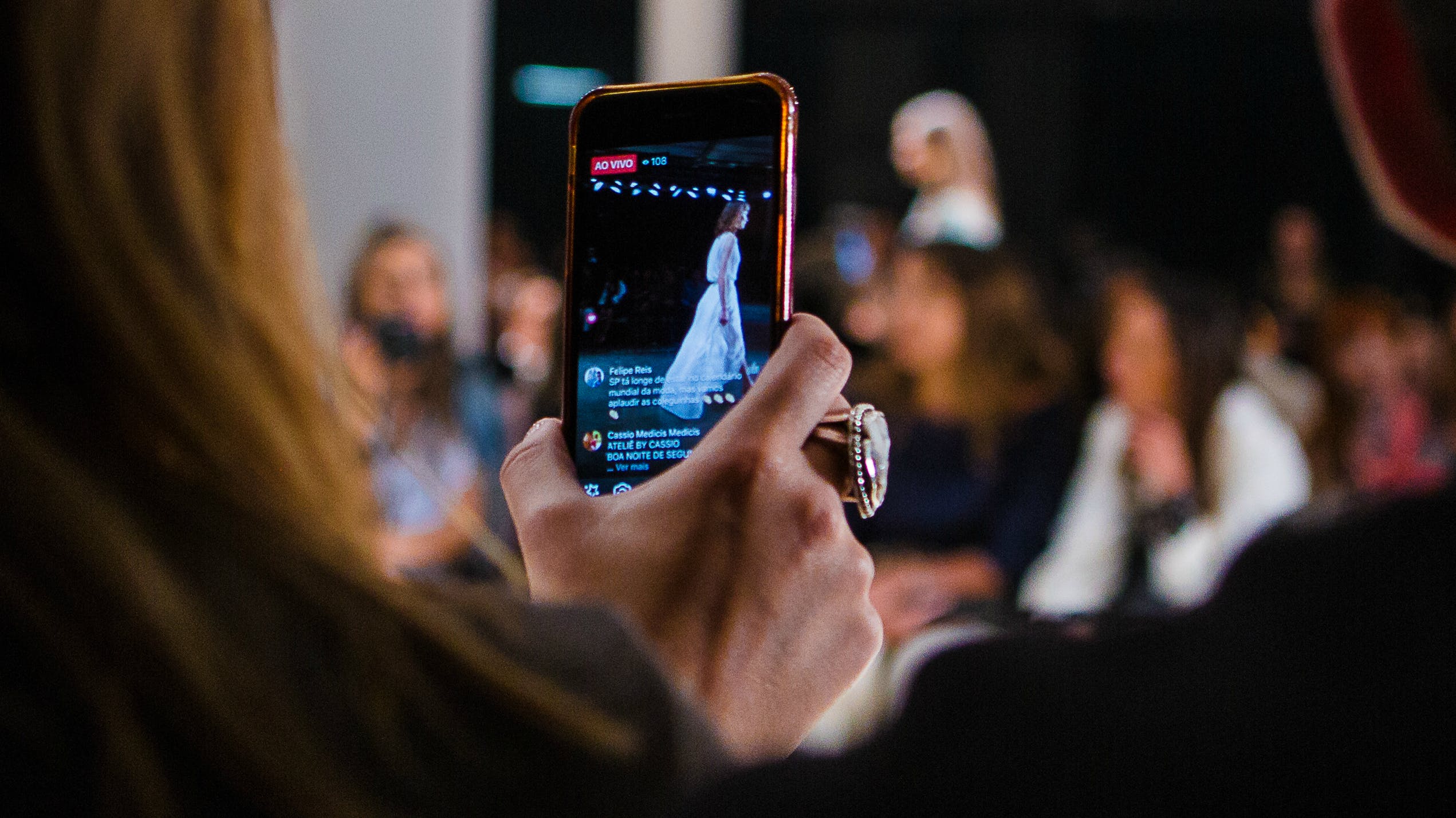
Photo by: Mauricio Santana/Getty Images
Photo by: Mauricio Santana/Getty Images
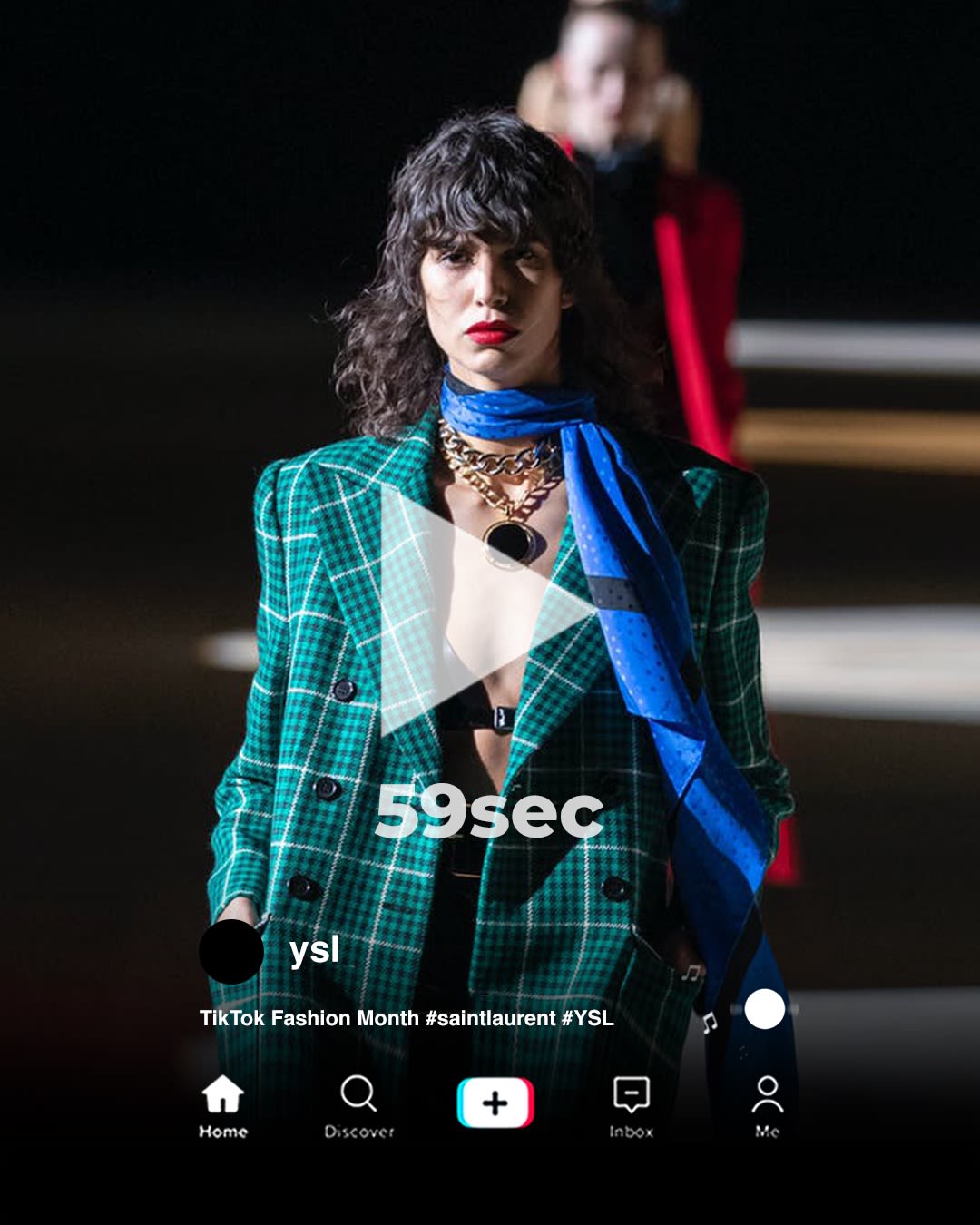
Photo by: Culted News
Photo by: Culted News
Will the fashion industry continue to expand digitally or will it return to traditional ways after the pandemic?
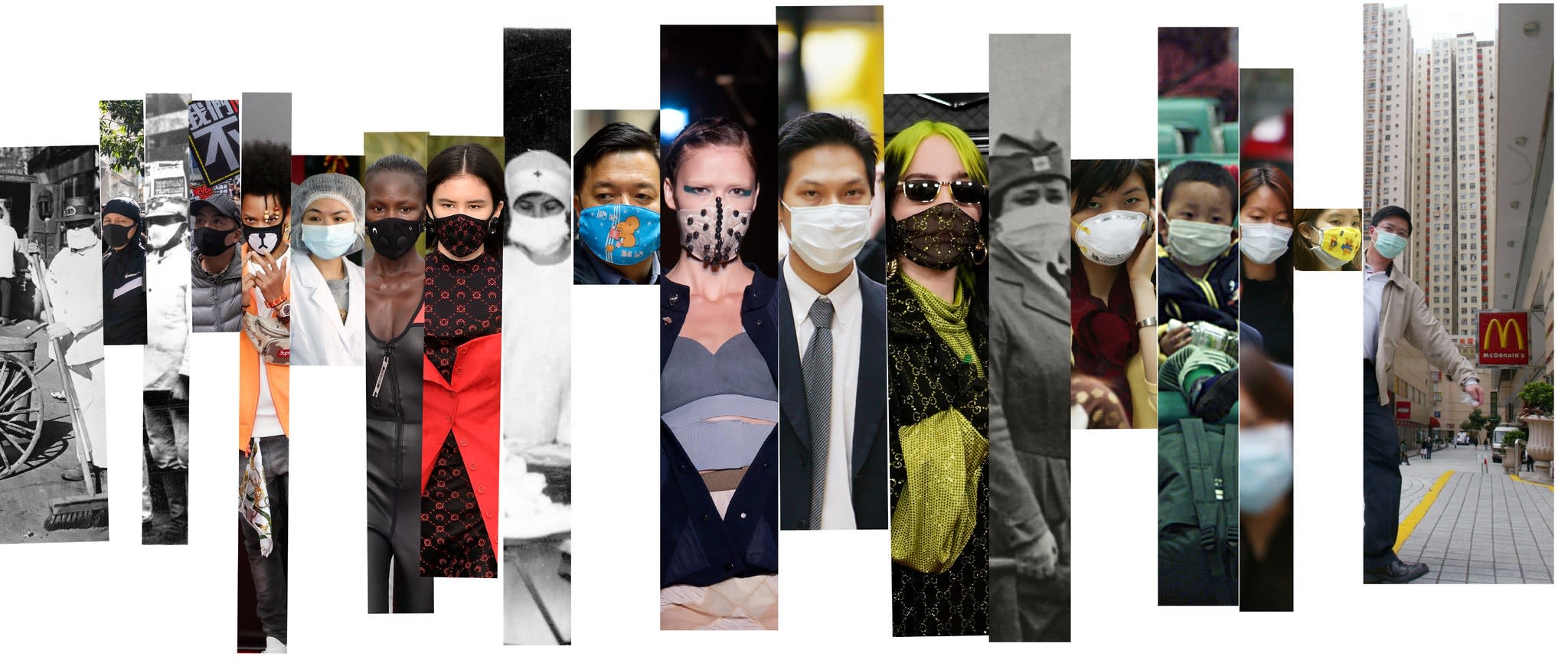
It's no surprise that the coronavirus pandemic has negatively impacted the fashion industry with production plummeting due to a lack of demand for clothing during lockdown and restrictions, as well as fashion retailers closing amongst other issues. However, the fashion industry like it has done previously has overcame these issues.
Thanks to digital developments in e-Commerce, it has enabled a modernised and exciting online shopping experience for consumers and it means customers don't even have to leave their homes. The buying and selling of fashion related goods or services has been completely innovated in various different ways.
Gone are the days of scrolling down vast amounts of studio shots imagining what the style and fit of a dress would look like in person. Now brands such as ASOS and Berksha are using short 5-10 second video clips which showcase what the clothing or item looks like on models.
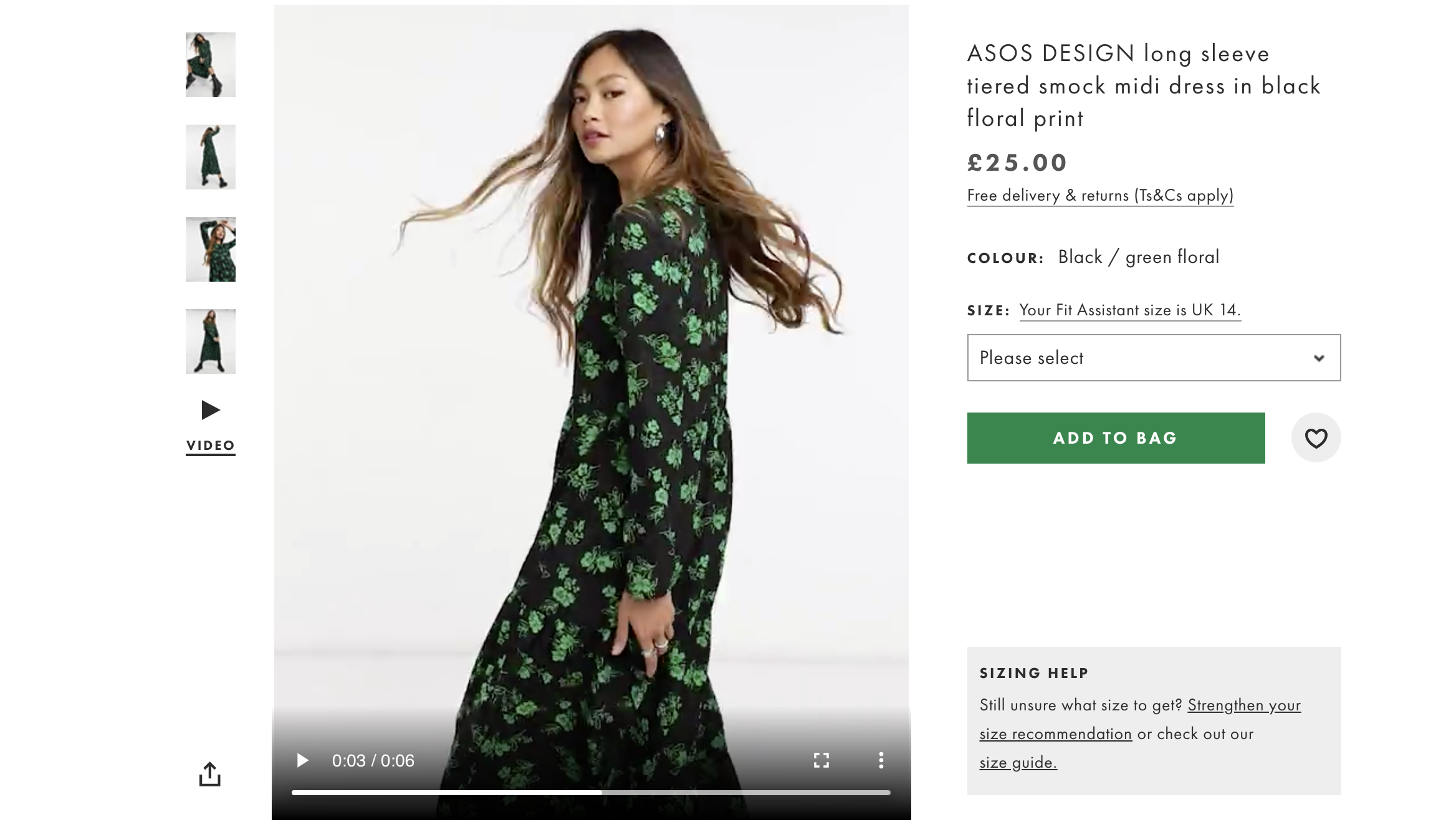
Fashion publications and brands themselves are adapting to the ever-changing digital industry through video-based E-commerce. Shoppable videos have now become the new norm within the fashion industry. Shoppable videos are clickable, interactive videos which enable people to click on the looks featured which then takes them to the brand’s products to find out more details.
They are seen as a great way to capture the consumers attention. Fashion brands such as Adidas are using shoppable videos to provide a cinematic experience for their audience’s:
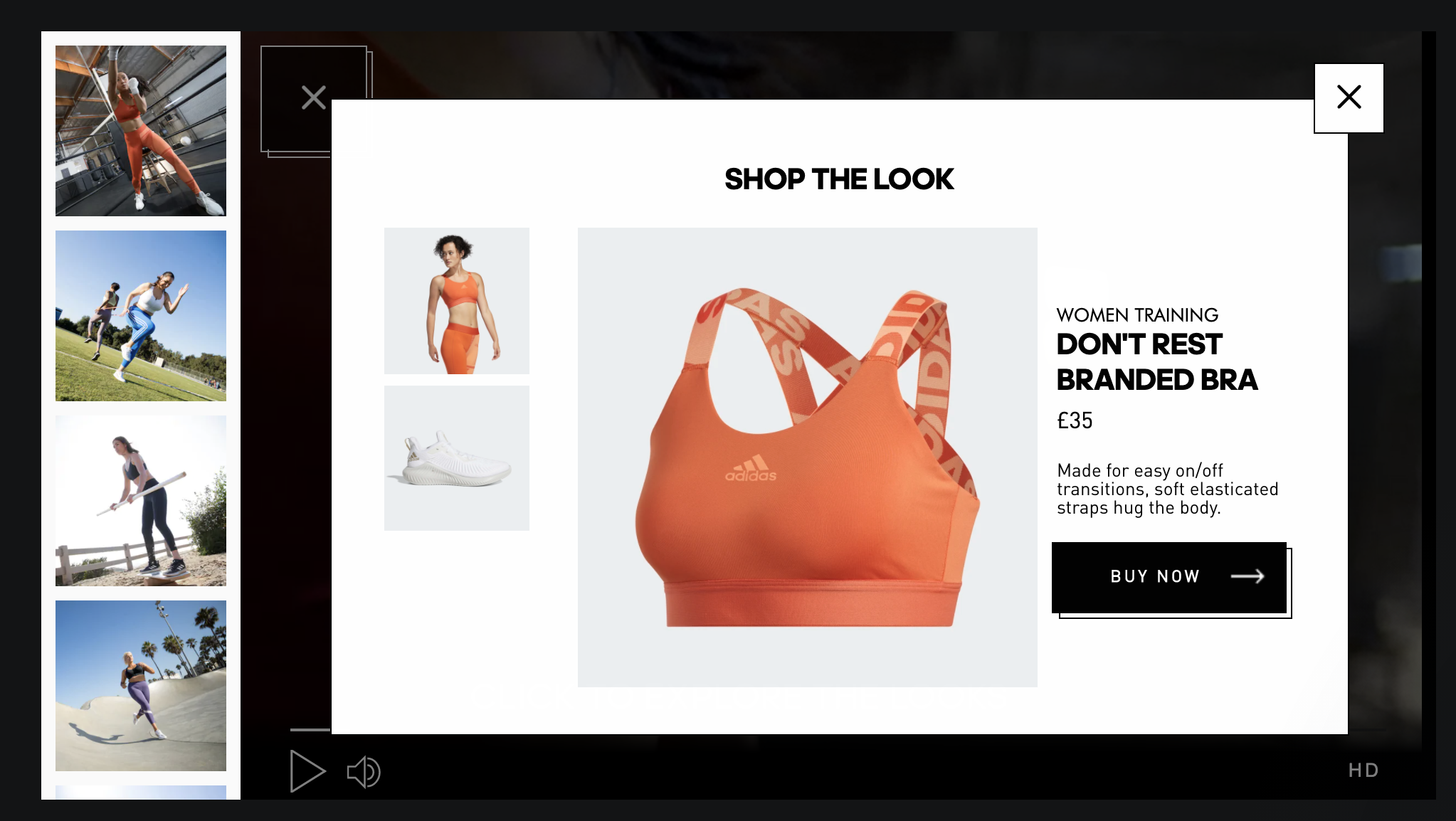
UK fashion and retail brand, Ted Baker, further upped the game in terms of video e-Commerce with their 2017 360 degree shoppable film labelled 'Keeping Up with the Bakers'. The film allowed users to browse through a home set-up and click on items to purchase.
It’s no doubt that people prefer entertaining watching immersive videos with storylines rather than scrolling through various images and reading descriptions. Customers now want an experience that’s different to any other, having digital features such as shoppable videos can make one brand stand out more than the other and can change customers purchasing decisions. According to StyleShoots: ‘52% of shoppers are more confident in their purchases when shopping with video content’.
Artificial Intelligence is completely re-shaping the fashion world. Algorithms are just one of many forms of technology that are being used within the industry today. They are able to analyse the data of clothing that is trending within the market and predict what the next trend is going to be which helps designers keep up to pace with making sure they ‘keep in style’ with what consumers want.
ASOS is one of many fashion retailers that have begun to use algorithms. ASOS has created a 'Style Match' tool which allows customers using their app to upload photos of any clothing and then find visually similar results from their site. It's a very useful and popular tool for fashion consumers as they can compare styles and prices to find the best one suited to them.
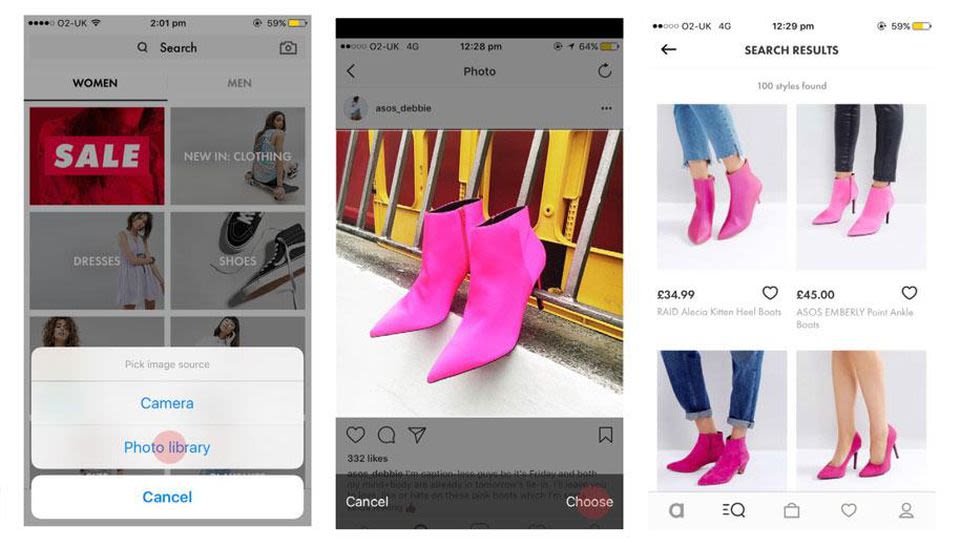
Photo by: Forbes
Photo by: Forbes
Another digital advancement within the industry is augmented reality and virtual reality, which many are labelling as being the future for the fashion industry. Digi-Capital estimated that “3.5 billion people would be using augmented reality by 2022”.
Gucci have installed AR features to their app which lets users ‘try on’ different trainer styles by titling their device down to their feet, to see what suits them or which shoes they prefer.
Gucci’s new #AR try-on app is pretty cool https://t.co/Qsq4Oybjsf pic.twitter.com/ytXqJdQk4E
— Ricardo 🇭🇰 (@RicO2O) June 28, 2019
GAP have also delved into the world of augmented reality with their Dressing Room app which lets users choose avatar’s with various different body shapes and outfits. If they like what they see they can purchase the items within the app.

Photo by: Divante
Photo by: Divante
A digital wardrobe doesn’t seem all that bad of an idea in the current climate with social distancing measures in place across the world due to the pandemic.
Virtual fashion has its environmental advantages too, as it reduces the impacts of waste and pollution that comes with fast fashion.
“Augmented Reality technology is completely changing industries. The ability to visualise fashion and beauty products in real time, demonstrates how it’s possible to leverage AR to make a retail experience more engaging and interactive,”
Are social media and the decline of print really having negative impacts on fashion publications? If there is anyone more influential within the industry and who has the answer to this, it has to be a fashion editor. Libby Redrup is the fashion editor of Lippy, a publication that focuses on a variety of topics; fashion, creativity, music and current affairs. She explains in her own words her views and experiences:
“Social media has a massive influence on the fashion world at a business level. It's the main source of advertising for many brands and a way for them to portray their ‘vibe’ to customers in a casual and direct way. Social media for many is unavoidable so it means that brands can have 24/7 access to influencing the public.
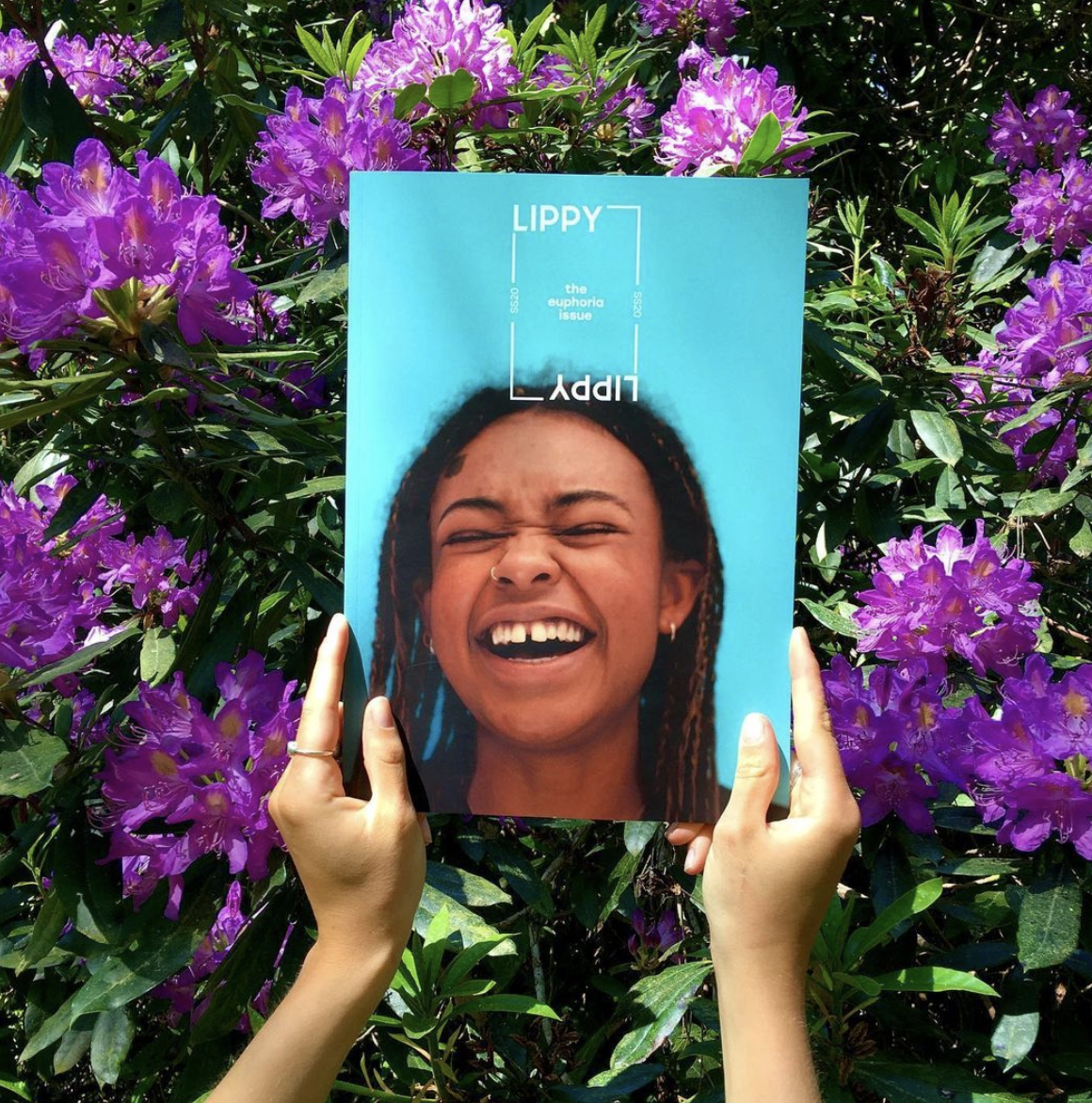
Photo by: Lippymagazine
Photo by: Lippymagazine
"Also, social media effects the individual in terms of their personal fashion choices. Fashion can have a positive effect increasing messages of body positivity and self-expression but also a negative effect where people can feel targeted, made to feel self-conscious and pressured by imaged and text they read on social media."
"I personally prefer writing for a mostly digital publication. I think with online article’s whilst there is a pressure to stay relevant, the speed that articles can be published on a website means this is a lot easier. Something can happen in the beginning of the week and an article can be published a few days later. With the increased use of technology to receive news/information it seems like the logical choice. It's so much easier for people to quickly read something they are interested in. Prints are more something to savour, a gift or a celebration of a particular topic which is why we work so hard to make our prints something that you will want to keep forever."
"Fashion will always be important, people get so much from their clothes and style; self-confidence, expression and identity. People will always be interested in fashion no matter what way it is portrayed. While the digital word offers some worries and changes to the fashion industry it continues to grow stronger.
"I believe change should always be taken as an exciting new thing in the fashion industry. Some people think of fashion as a historical thing where there are particular traditions that need to be upheld. While that is a great thing to have its also important to go with the flow and adapt to any changes in the world. "
So, it seems that although there are drawbacks in the digital age for fashion publications, there are also many positive aspects. Lippy's recent 'SS2O Euphoria' issue is available here to purchase.
The answer is, yes there is a stable future for fashion even within the ever-changing and digitally focused world. The fashion industry has overcame and adapted to whatever challenges comes its way. After all, the industry has faced; world wars, climate change, pollution, and in recent times the coronavirus pandemic.
We as a society have already said goodbye to some of the traditional aspects of the fashion industry. In the near future, we may say goodbye to print publications, fashion stores, or even face-to-face fashion shows. Fortunately for now, physical clothing is still the norm.
Rachel Stott, a researcher from The Future Laboratory has said: “We’re finally seeing the digital industry revolutionise age-old practice and evolving over the next 20 years. She also described digital fashion as offering opportunities for brands to “exert creativity, and connect with consumers through a different medium.”
So, in short, the show must go on. The future of fashion is exciting within the digital age, not only for those within the industry but for us as consumers too. It may be daunting for some, but it is for sure that fashion is here to stay with more changes, innovations and modernised technology yet to come within the industry.


